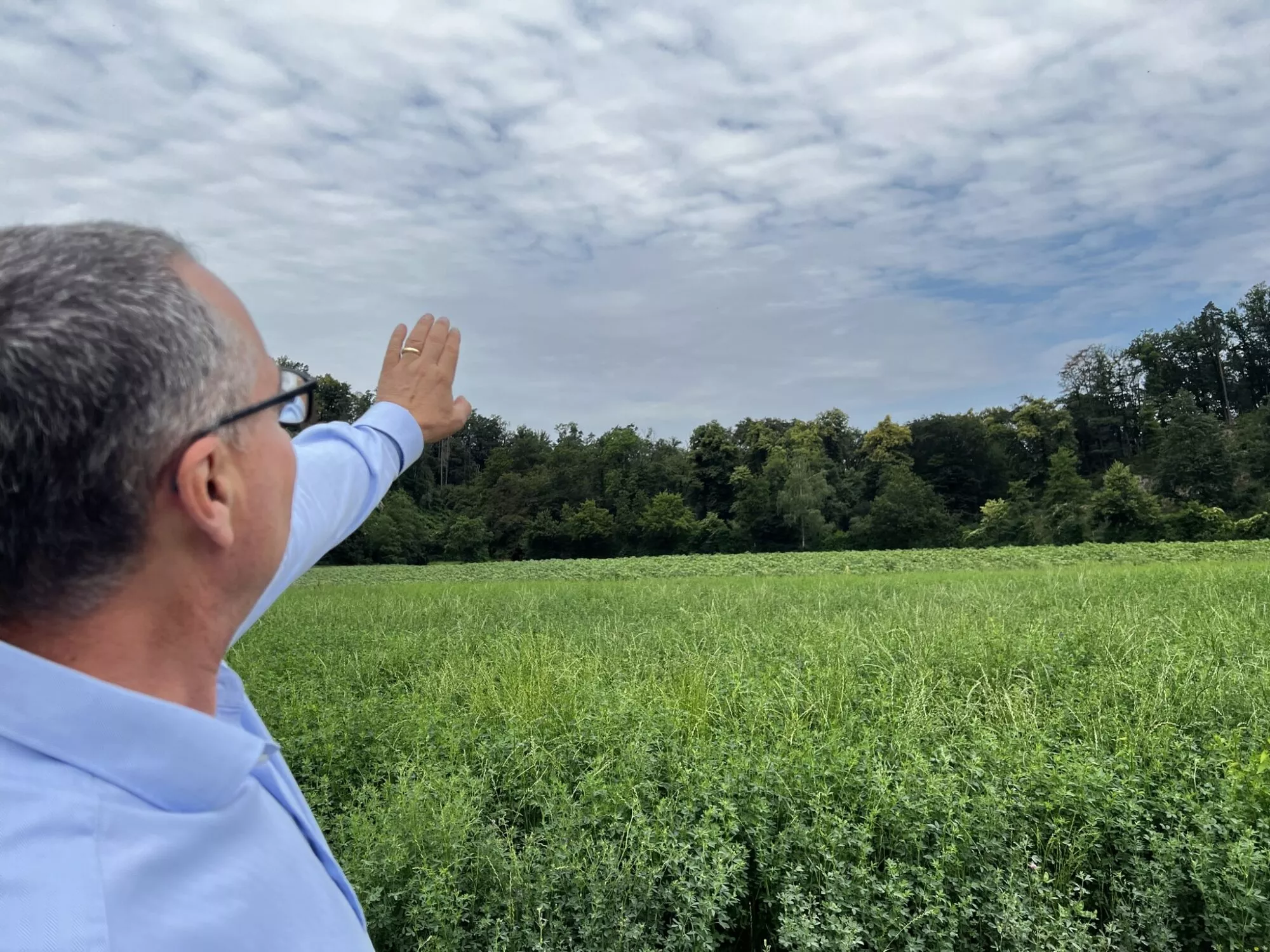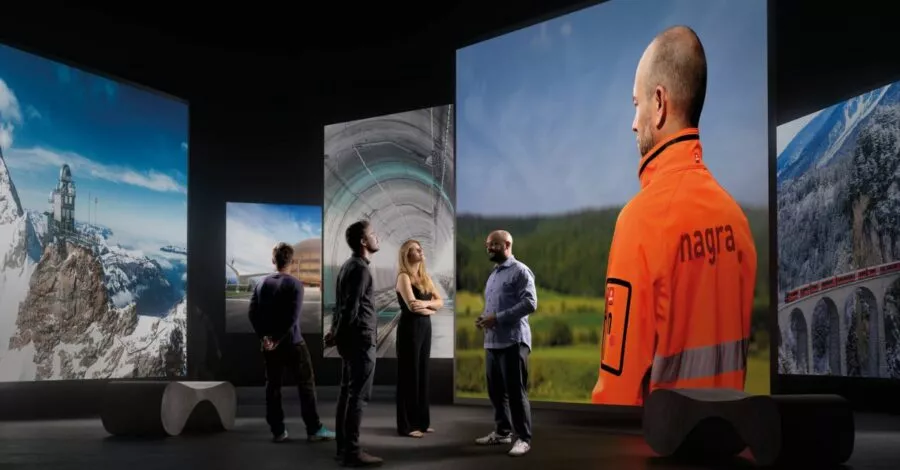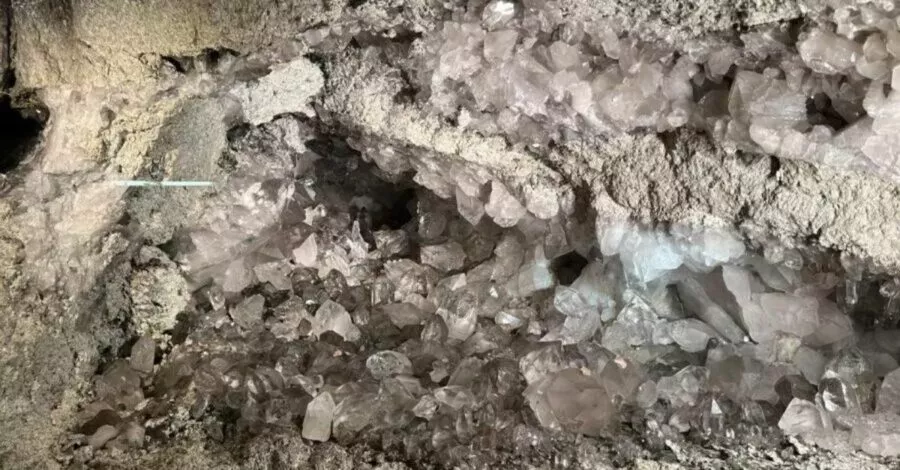
“When we are done here, the site will be in as good a condition as it was before – maybe even a little better.”
Dismantling is a success when no one notices a difference from before. This applies to dismantling a drill site and will also apply to the surface of the future deep geological repository.
“After” should look like before, only after. This is the basic principle of dismantling. To achieve this objective, the infrastructure must be disassembled and the natural habitat restored.
A green valley near Bülach lined with forest on either side. Only the rundown, former factory disturbs the idyll. It was built before the valley was designated as an agricultural zone in the 1970s.
At first and second glance, nothing indicates the presence of a larger construction site, let alone the “Bülach-1” drill site. A third glance is needed to notice the access road to the so-called rig cellar.
This valley was busy with construction vehicles, excavators, a drilling rig and containers for the people who worked at the drill site. There was a storage area for supplies and space for trucks and other vehicles. A noise barrier kept noise emissions below the strict limits. And while there are no neighbours in sight, this does not mean there are none around.

Protecting the soil is complex
Soil and environmental protection play a central role in the project of the century of deep geological disposal. Specifically, during the deep borehole campaign conducted to investigate the subsurface of Northern Switzerland, and it will also matter greatly during the later planning and construction of the deep geological repository.
“You have to take special care of the soil,” Jürg Neidhardt points out. Jürg is Senior Project Manager at Nagra and responsible for the dismantling of all the drill sites. Agricultural zones are protected in Switzerland. The soil that will make the clover sprout in June 2023 is the same soil that was cultivated in this valley before work began in 2017. How is that possible?
“Protecting the humus requires a lot of work,” explains Neidhardt, “a single excavator removes the topsoil strip by strip. This is the most valuable layer as it contains the most nutrients and the ground is loosest.” To prevent the excavator from damaging this precious soil with its weight, it crosses the soil on so-called “excavator mats” made of wood. These help to distribute the pressure over a larger area. To advance, the excavator operator picks up a mat from behind and positions it in the direction of travel.
The soil removed is heaped and planted with special seed. The resulting vegetation protects the soil and keeps it loose and fertile. After the complete dismantling of the drill site, the previously removed layer of topsoil is returned to the site and replanted in accordance with strict guidelines.

Even before the first excavator and the container arrive and initial digging begins, no effort is spared to ensure that the landscape will look just as it did before work began – basically, as if it had been left untouched.
This applies not only to the soil, but also to the wildlife and even the topography, i.e. the shape of the terrain. For this to succeed, a detailed plan and relevant permits are needed. Jürg Neidhardt, together with a team of experts, successfully developed and implemented this project. The authorities checked compliance with a total of 110 conditions.
Neidhardt emphasises: “The planning phase is crucial for dismantling. This is where all the necessary steps are set out to minimise any potential impact on the environment.” Experts monitor the process and ensure that all legal requirements are met during construction and operation. The focus is on environmental protection and sustainability.


3D model matches reality
Nagra simulated the setup and dismantling phases for the drill site in advance using a 3D model. In retrospect, the comparison of this model with reality impressively illustrates how theory and practice converge.
During drilling operations, all procedures are strictly monitored. Noise barriers and special lighting help to comply with legal requirements – and, ideally, even to fall below them.
Jürg Neidhardt sums it up neatly: “When we are done here, the site will be in as good a condition as it was before – maybe even a little better.”
No difference between before and after: in the case of the former drill site, this means a green valley near Bülach lined with forest on either side.
Similar articles
What does Switzerland think about the deep geological repository?
Switzerland is confident that it can realise the project of the century of deep geological disposal. A recent, representative survey shows that acceptance is high across the whole of Switzerland and in the affected region.



